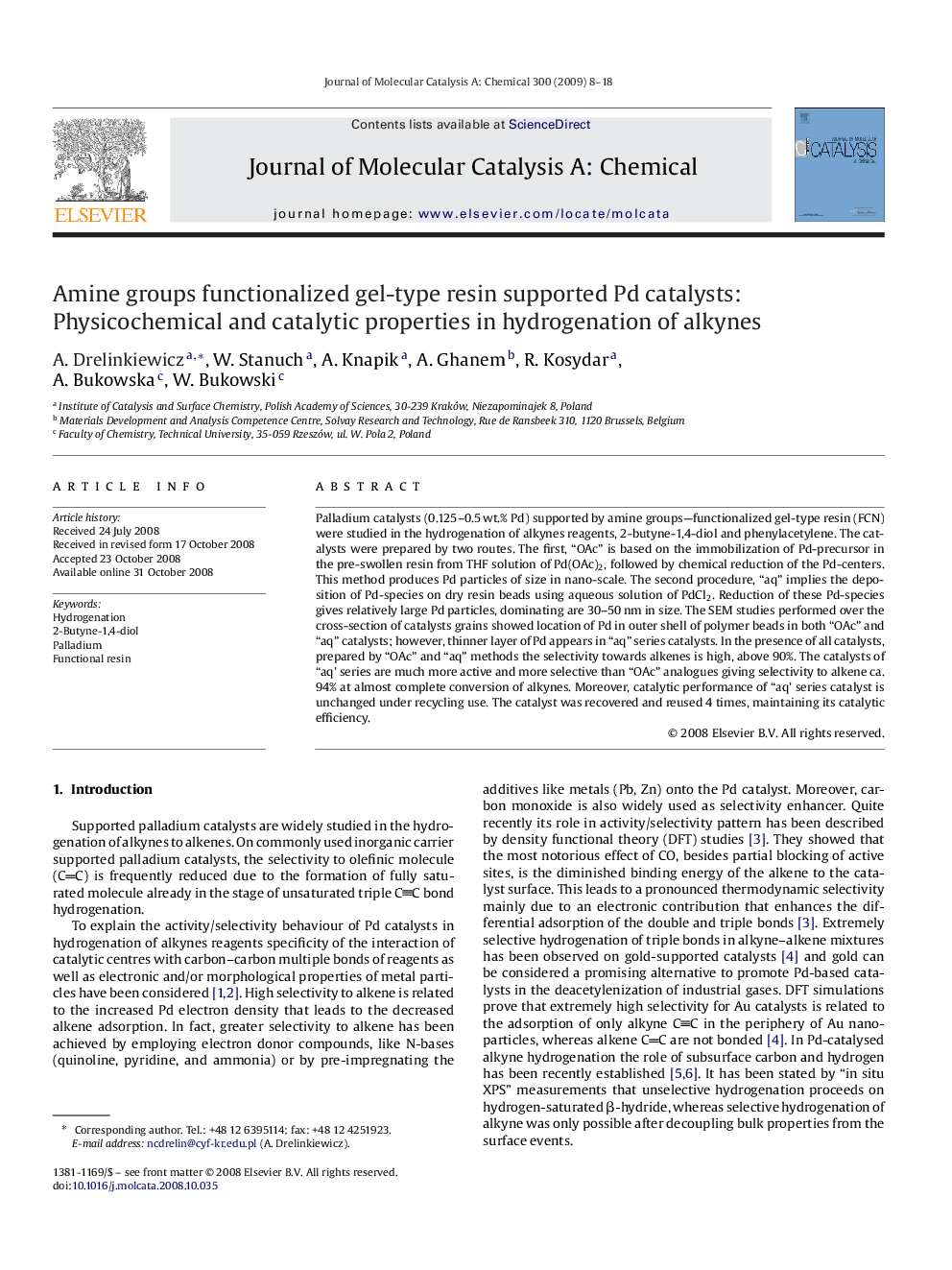| Article ID | Journal | Published Year | Pages | File Type |
|---|---|---|---|---|
| 67204 | Journal of Molecular Catalysis A: Chemical | 2009 | 11 Pages |
Palladium catalysts (0.125–0.5 wt.% Pd) supported by amine groups—functionalized gel-type resin (FCN) were studied in the hydrogenation of alkynes reagents, 2-butyne-1,4-diol and phenylacetylene. The catalysts were prepared by two routes. The first, “OAc” is based on the immobilization of Pd-precursor in the pre-swollen resin from THF solution of Pd(OAc)2, followed by chemical reduction of the Pd-centers. This method produces Pd particles of size in nano-scale. The second procedure, “aq” implies the deposition of Pd-species on dry resin beads using aqueous solution of PdCl2. Reduction of these Pd-species gives relatively large Pd particles, dominating are 30–50 nm in size. The SEM studies performed over the cross-section of catalysts grains showed location of Pd in outer shell of polymer beads in both “OAc” and “aq” catalysts; however, thinner layer of Pd appears in “aq” series catalysts. In the presence of all catalysts, prepared by “OAc” and “aq” methods the selectivity towards alkenes is high, above 90%. The catalysts of “aq’ series are much more active and more selective than “OAc” analogues giving selectivity to alkene ca. 94% at almost complete conversion of alkynes. Moreover, catalytic performance of “aq’ series catalyst is unchanged under recycling use. The catalyst was recovered and reused 4 times, maintaining its catalytic efficiency.
Graphical abstractAmine groups—functionalized gel-type resin (FCN) supported Pd catalysts exhibit attractive performance in hydrogenation of alkynes reagents, 2-butyne-1,4-diol and phenylacetylene. The selectivity to desired alkenes products attained ca. 94% at almost complete conversion of alkynes. This performance is unchanged under the recycling use of catalysts.Figure optionsDownload full-size imageDownload as PowerPoint slide
